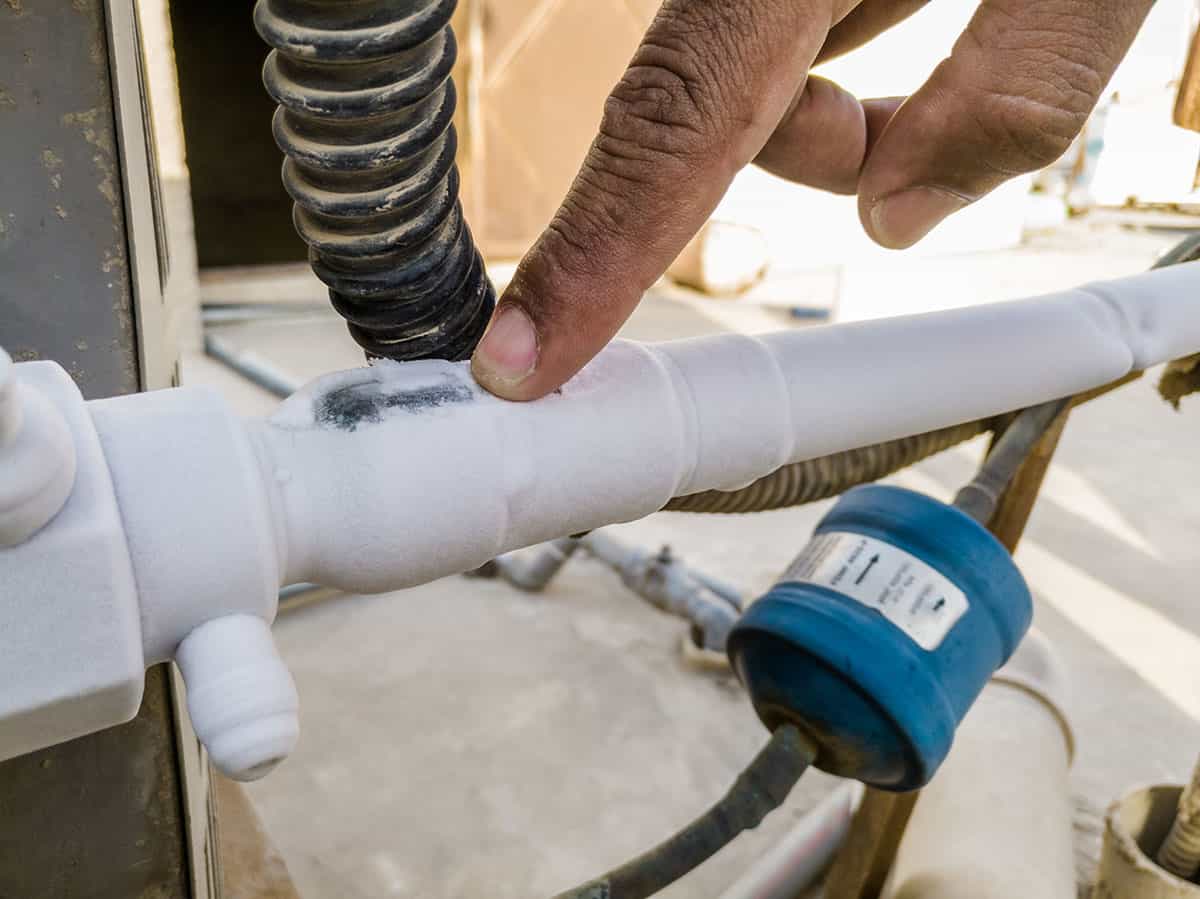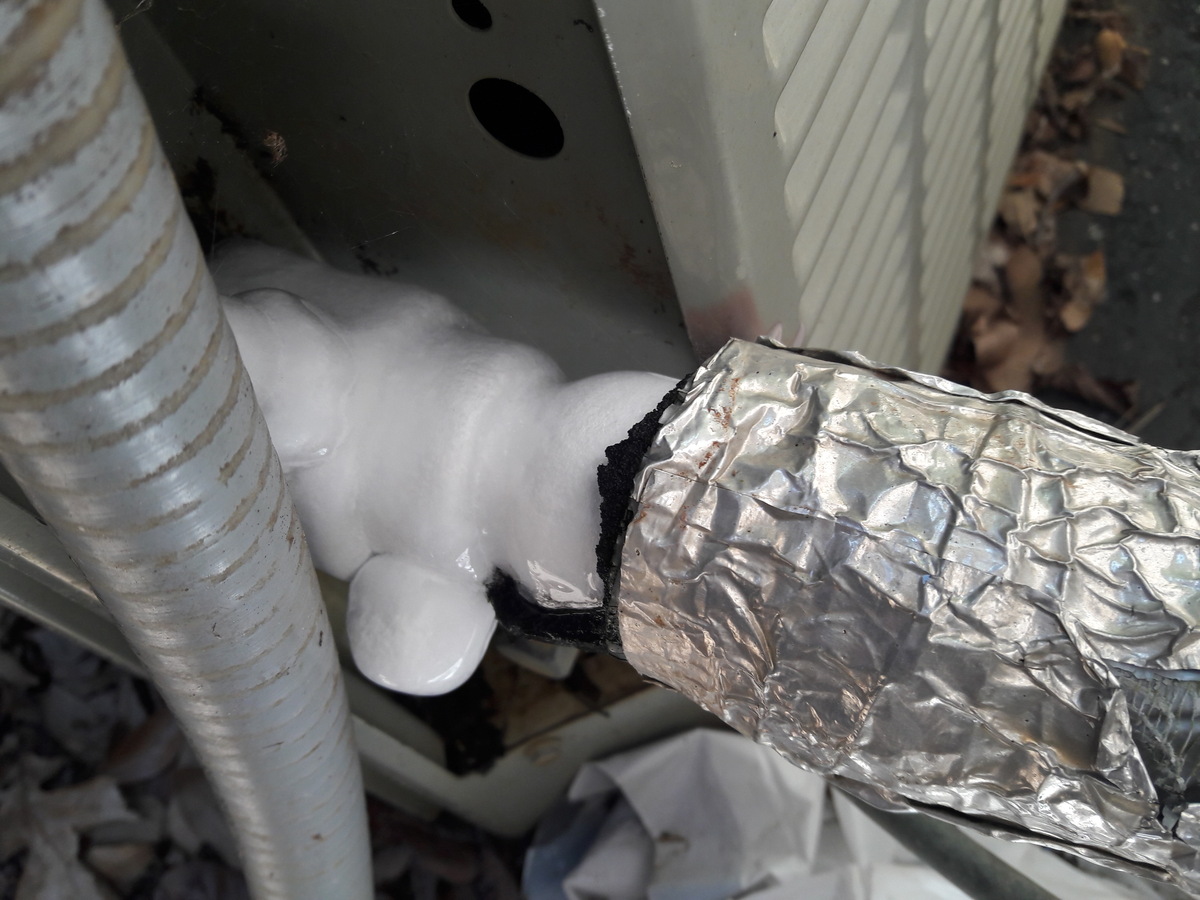Handling a Frozen AC Pipe: Proven Strategies
Handling a Frozen AC Pipe: Proven Strategies
Blog Article
They are making a number of great points about Have a Frozen AC Line? Here’s How to Fix It in general in this great article in the next paragraphs.

Introduction
Uncovering that your air conditioner pipe is iced up can be worrying, particularly during hot summer months when you rely on your a/c the most. Understanding what to do in such a circumstance is critical to avoid more damage to your air conditioning system and ensure your convenience indoors.
Recognizing the Causes
Several variables can contribute to the freezing of an AC pipe. Recognizing these causes can assist you attend to the concern successfully.
Absence of Airflow
One common root cause of an icy air conditioner pipe is inadequate air movement. When the air flow over the evaporator coil is limited, it can cause the coil to go down below freezing temperature, bring about ice development on the pipe.
Reduced Refrigerant Levels
Insufficient cooling agent degrees in your air conditioning system can additionally lead to a frozen pipeline. Reduced refrigerant levels can cause the stress in the system to go down, leading to the freezing of moisture on the evaporator coil.
Cold Weather Conditions
In chillier climates, freezing temperatures outside can contribute to the cold of air conditioner pipelines. If your air conditioner unit is not effectively insulated or if there are leakages in the ductwork, chilly air can infiltrate the system, causing the pipe to freeze.
Dirty Air Filters
Dirty or blocked air filters can restrict airflow in your air conditioning system, resulting in various concerns, consisting of a frozen pipeline. It's essential to change or cleanse your air filters consistently to guarantee proper airflow and prevent ice build-up.
Indicators of a Frozen AC Pipe
Identifying the indications of a frozen a/c pipe is important for prompt action.
Reduced Airflow
If you notice a substantial decline in airflow from your vents, it can show a frozen pipe.
Ice Buildup on the Pipe
Visible ice build-up on the refrigerant line or the evaporator coil is a clear indication of a frozen a/c pipeline.
Weird Sounds from the Unit
Unusual sounds, such as hissing or gurgling, originating from your air conditioning system can signify that there's ice existing on the pipe.
Immediate Actions to Take
When faced with an icy a/c pipe, it's important to act swiftly to prevent further damages to your cooling system.
Switching off the air conditioner
The initial step is to shut off your a/c to avoid the system from running and worsening the issue.
Looking for Blockages
Check the area around the interior unit for any obstructions that might be obstructing airflow, such as furniture or drapes.
Defrosting the Pipe
You can make use of mild techniques like positioning towels soaked in cozy water around the icy pipe to aid thaw it slowly.
Safety nets
Taking safety nets can help avoid future events of a frozen AC pipeline.
When DIY Methods Fail
If your efforts to thaw the pipeline or address other concerns are not successful, it's time to call an expert.
Importance of Hiring a Professional HVAC Technician
A certified HVAC technician has the expertise and tools needed to diagnose and repair concerns with your air conditioner system safely and successfully.
Routine Maintenance Checks
Arrange routine maintenance consult an expert HVAC specialist to guarantee that your air conditioning system is running successfully.
Altering Air Filters
Regularly change or clean your air filters to prevent airflow restrictions and keep ideal performance.
Insulating Exposed Pipes
If your AC pipes are exposed to cold temperatures, consider insulating them to prevent freezing throughout cold weather.
Seeking Professional Help
If DIY techniques fall short to deal with the concern or if you're unclear concerning just how to proceed, it's ideal to look for support from a qualified HVAC professional.
Conclusion
Handling a frozen air conditioning pipe can be a frustrating experience, however knowing just how to respond can assist minimize damage and bring back comfort to your home. By recognizing the reasons, recognizing the signs, and taking prompt action, you can efficiently resolve the concern and prevent future occurrences.
What to Do If Your AC Line Is Frozen
Make Sure All Supply and Return Air Vents Are Open
If you notice problems with airflow, the first thing you should do is check your supply and return vents. Supply vents distribute clean, conditioned air throughout your home. As this air becomes stale, it’s pulled into the return vent, where it’s reconditioned before being sent back out through the supply vent.
When these vents are closed, air won’t flow in the home. Before examining your AC, check the vents in every room and ensure they’re all open.
Check for a Dirty Air Filter
Another possible cause of limited airflow is a dirty air filter. Your air conditioner’s filters catch elements you don’t want to breathe in, such as dirt and dust. Over time, filters can become clogged, ultimately blocking air from flowing in and out. The lack of airflow can then cause the entire coil to freeze and will completely restrict any air from moving through it. The AC may need to be powered off for one to two days to allow the coil to thaw after replacing the filter to allow proper functioning of the unit. This debris can also accumulate on your AC’s evaporator coil, requiring a more serious repair. In general, air filters should be cleaned regularly (about every two weeks).
Assess Your Outdoor Unit
In addition to checking your AC, assessing the outdoor unit is a good idea. Also known as the condensing unit, it works with your interior unit to release heat outside. An issue with the outdoor unit can result in rising internal temperatures.
Overgrown Shrubs or Clogged Leaves
From leaves and twigs to shrubs and debris, there’s no shortage of outdoor elements that can accumulate around your condensing unit. When these elements get lodged inside the unit, they can block airflow. Fortunately, removing the blockage can solve the problem.
Sounds of a Broken Fan
Shrubs and leaves aren’t the only things that can impede your outdoor unit’s airflow. If the fan is broken, the unit won’t be able to properly get rid of heat — which means the internal temperature won’t go down. First, make sure the fan is spinning. If it is, check for the following sounds of a broken fan:
Buzzing Rattling Screeching Hissing Clicking Preventative Measures
Nobody wants to deal with a frozen AC line. In addition to causing problems with your air conditioner, they require professional repairs. On the bright side, there are preventative measures you can take to help ensure this issue doesn’t arise in the first place.
https://www.coopergreenteam.com/blog/what-to-do-if-ac-line-frozen

As an avid person who reads about Have a Frozen AC Line? Here’s How to Fix It, I was thinking sharing that piece of content was really useful. Do you know about somebody else who is very much interested in Have a Frozen AC Line? Here’s How to Fix It? Be sure share it. Thank you so much for going through it.
Get Quote Now Report this page